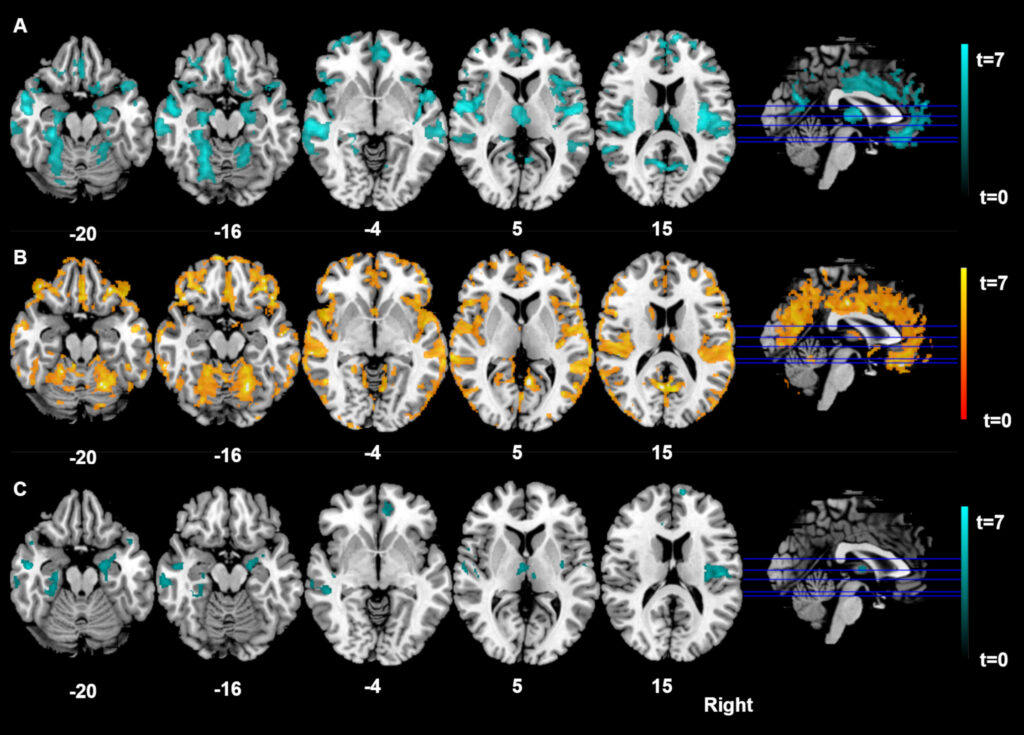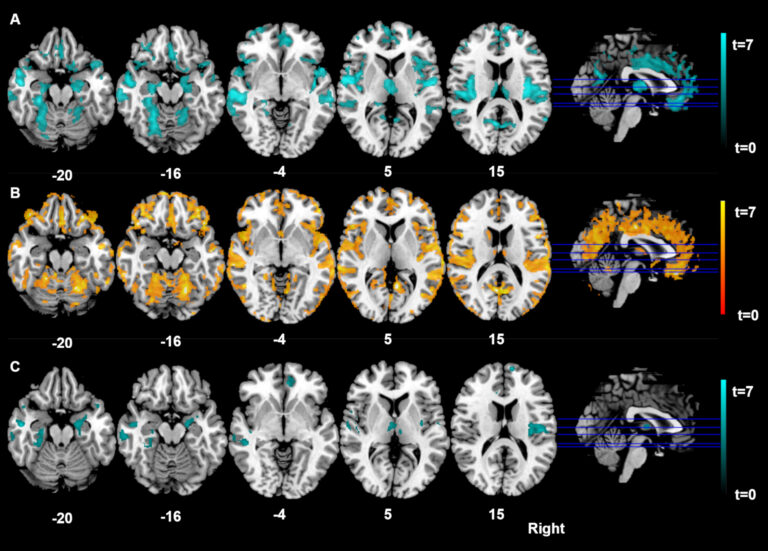
Milser Straße 10, Haus 6
6060 Hall in Tirol
Fax: +43 (0)50 504 33802
Email: Kathrin.Sevecke@i-med.ac.at
Website: https://www.tirol-kliniken.at/page.cfm?vpath=standorte/landeskrankenhaus-hall/medizinisches-angebot/kinder--und-jugendpsychiatrie _
Research year
Research Branch (ÖSTAT Classification)
302036, 501005, 501009, 501010
Keywords
adolescents, attachment, Children, clinical psychology, personality disorders, post-traumatic growth, psychiatry, psychotherapy, resilience, and trauma
Research Focus
Our research centre’s main focus is the study of attachment and its clinical applications during childhood and adolescence. We also identify the strengths of children and young people and build on them, especially in the context of the corona crisis. We apply a framework that includes the latest findings on affective, biological and developmental contributors to psychopathology. This allows us to derive novel intervention approaches for patients and their families.
General Facts
Special aims of the unit: Our research unit is dedicated to attachment, personality disorders, resilience, trauma, the impact of the pandemic, gender dysphoria and psychotherapy. We specialise in attachment-based interventions, home treatment and interventions for anorexia nervosa and personality disorders.
The research unit is structured as follows: Prof. Kathrin Sevecke’s research team is made up of the following members: one assistant Prof. (Gander), one senior postdoc (Exenberger-Vanham), two postdocs (Jahnke-Majorkovits/ Kohlböck), one medical doctor (Fuchs), three PhD students (Leonhardt, Kranholdt, Taferner) and a research assistant (Juen)
Clinical routine: We are currently evaluating innovative interventions for clinical settings in our clinic (VIPP programme at the parent-child ward, attachment-based treatment for in- and outpatient adolescents, yoga intervention for adolescents with eating disorders). We have a special unit for adolescents with gender dysphoria and have piloted digital narratives with children and adolescents.
Collaborations:
Medical University of Innsbruck: Univ.-Prof. Dr. Elke Gizewski
Leopold-Franzens University: Univ.-Prof. Dr. Anna Buchheim, Univ.-Prof. Dr. Barbara Juen, Univ.-Prof. Dr. Suzanne Kapelari, Univ.-Prof. Dr. Alfred Berger, Ao.Univ.-Prof. Dr. Christian Raschner, Univ.-Prof. Dr. Marcel Zentner, Ass.-Prof. Dr. Markus Canezei
Medical University of Vienna: Univ.-Prof. Dr. Andreas Karwautz
University Clinic Basel: Univ.-Prof. Dr. Klaus Schmeck, Dr. Kirstin Goth
University of Leiden: Dr. Marije Stoltenborgh
Medical University of Graz: Univ.-Prof. Dr. Isabel Böge
Research
-
Attachment and psychopathology in children and adolescents
The study of attachment, its assessment and clinical applications during adolescence provided a comprehensive insight into the underlying mechanisms of personality development and psychopathology. Our research focuses on the role of attachment trauma in children and adolescents with mental disorders and its impact on emotion regulation and psychopathology. We plan to elucidate a deeper understanding of the nuances of attachment, trauma and traumatic childhood experiences in patients with personality pathology, Anorexia Nervosa, Depression, Non-Suicidal Self-Injury Disorder, substance abuse disorder (internet/online gaming) and suicide risk.

Attachment and mental disorders in adolescents
Gander, Sevecke, Kohlböck, Fuchs
Examination of the underlying dimensions that mediate the course and outcome of mental disorders in adolescents (i.e. eating disorders, personality disorders, internet addiction, NSSI)
Attachment and externalising and internalising symptoms in a parent and child ward
Jahnke-Majorkovits, Taferner, Gander, Sevecke
Examination of diagnosis and underlying dimensions (e.g., attachment patterns) of infants and toddlers with their parents at a child psychiatric parent-child unit
-
Psychotherapy research
We implement novel attachment-based and trauma-related treatments in child and adolescent psychiatry. This may optimise outcomes and is a useful adjunct to first-line inpatient psychiatric treatment. This approach may be able to help clinicians to gain a broader understanding of an adolescent’s psychopathological symptoms, formulate therapeutic goals and improve the quality of attachment.
Attachment-based treatment for adolescents with psychiatric disorders
Gander, Sevecke, Jahnke-Majorkovits
Testing the effectiveness of a new attachment-based treatment on outcome variables such as personality functioning, symptom severity, attachment quality and physiological stress level in a sample of 60 inpatient adolescents
Yoga for inpatients with eating disorders
Taferner, Sevecke, Exenberger-Vanham
Examination of mechanisms and impact factors from a trauma-informed yoga intervention for inpatient adolescents with eating disorders on outcome variables such as interoceptive awareness, stress and character strengths.
Video-based intervention VIPP-SD in the parent-child ward
Jahnke-Majorkovits, Sevecke
We implemented the video-based intervention VIPP-SD (video-feedback intervention to promote positive parenting and sensitive discipline) at our psychiatric child parent ward in our effort to support parents in their sensitivity, particularly when the child was already showing behavioural problems.
Hometreatment
Kranholdt, Gander, Sevecke, Jahnke-Majorkovits
Effectiveness of home treatment as a new option in child and adolescent psychiatry for social functioning, attachment quality and psychopathological symptoms.
-
The aftermath of Covid-19
The aim of this study is to record anxiety, depression and trauma symptoms, as well as resilience from a parent and child perspective in 3 to 14-year-old children from North-Tyrol. Standardised questionnaires are used to allow parents of children aged 3-7 to assess their own symptoms and resilience. Children aged eight to 14 years provide information about themselves and are also assessed by their parents. Parents are also asked direct questions about their (a) thoughts on the matter of the Covid-19 crisis in relation to their children, and (b) concerns and hopes for their children’s future. The children participate in interviews about on how they felt during and after the COVID-19 pandemic (negative and positive aspects). Data is collected from two groups of children without psychological and/or psychiatric treatment at school and those receiving inpatient or outpatient psychological and/or psychiatric treatment. The children participate in a one-time intervention to train their creativity in order to improve their problem-solving skills.
Exenberger-Vanham, Sevecke
-
Gender Dysphoria in children and adolescents
The rising number of adolescents with gender dysphoria poses significant challenges in clinical management, particularly in determining appropriate treatments. Our research group addresses these challenges through observational, longitudinal and intervention studies, focusing on co-occurring psychological impairments. Areas of particular interest include personality functioning, identity development and attachment representation, where research remains limited. Our work is informed by extensive clinical experience in a specialised outpatient clinic for children and adolescents with gender dysphoria. Our research is based on practical knowledge, theoretical engagement and international collaboration.
Leonhardt, Fuchs, Kohlböck, Gander, Sevecke
-
Prevention
Schools are a great opportunity to promote mental health, prevent mental health problems and identify children with emotional problems and difficulties. Mental health literacy training packages have been developed to support the mental health of students and raise mental health literacy.
Get Fit 4 Mental Health
Teacher training includes weekly lectures on mental health issues, slide presentations and handouts as well as an implementation plan at Tyrolean schools. The present study will evaluate the effectiveness of this mental health literacy intervention on mental health knowledge, stigma and help-seeking behaviour in young people.
Leonhardt, Sevecke, Gander
Digital storytelling
Audio-visual stories of 2-3 minutes are created with children and adolescents from the department and from an Innsbruck middle school. These combine participant-written scripts with music, video, photos, text, and drawings (created during the process or sourced freely). Stories are developed in 3-4 days through interactive group sessions with 5-10 participants. These focused on “What they would tell a friend about their life in the child and adolescent psychiatry”.
Exenberger-Vanham
Pictures
Selected Publications
Gander, M., Buchheim, A., Kohlböck, G., & Sevecke, K. (2025). Unresolved attachment and identity diffusion in adolescence. Development and Psychopathology, 37(1), 429–438. https://doi.org/10.1017/S0954579424000014Gander, M., Buchheim, A., Sevecke, K. (2024). Personality disorders and attachment trauma in adolescent patients with psychiatric disorders. Res Child Adolesc, 52, 457-471. doi: 10.1007/s10802-023-01141-1.
Jahnke-Majorkovits, A.C., Fauth, C., Gander, M., Sevecke, K. (2024). Treatment of psychiatric comorbidities and interaction patterns in Coffin-Siris syndrom: A case report of a 4-year-old girl. Clin Case Rep, 12, e8230. doi: 10.1002/ccr
Kohlboeck, G., Wenter, A., Sevecke, K. Exenberger, S. (2023). Differences in perceived threat and trauma in children during the COVID-19 pandemic. Child Adolesc Psychiatry Ment Health, 17, 83. doi: 10.1186/s13034-023-00628-5.
Pfitscher, G., Taferner, C., Marketz, C., Sevecke, K., & Exenberger, S.* (accepted). Children’s posttraumatic growth in the aftermath of the Covid-19 pandemic in Austria: a mixed methods study. Journal of Happiness Studies.
Selection of Funding
- Microbiom-gut-brain interaction in Anorexia nervosa: Part of the European project “Microbiom-gut-brain interaction in Anorexia nervosa” (MiGBAN) (coordinator: Herpert-Dahlmann) funded by the ERANET-NEURON-2018 Call (in Austria: FWF).
- Covid-19 and children: Land Tirol (Projekt-Nr. F.21427) and COVID-19 follow-up study for children and adolescents
- Hometreatment as a new intervention for child and adolescent psychiatry (funded by the Tyrolean Government)
- VIPP: Bindungsbezogene Behandlung von 1-6- jährigen Kindern und ihren Eltern: Qualitätsförderungsprogramm 2021 des Tiroler Gesundheitsfonds
- GetFit4Mental Health (funded by the Tyrolean Government)
Collaborations
Univ.-Prof. Dr. Anna Buchheim, Institute of Psychology, University of Innsbruck, Austria
Univ.-Prof. Dr. Barbara Juen, Institute of Psychology, University of Innsbruck, Austria
Univ.-Prof. Dr. Andreas Karwautz, Department of Child and Adolescent Psychhiatry, Medical University of Vienna, Austria
Univ.-Prof. Dr. Martin Kopp and Ao. Univ.-Prof. Dr. Christian Raschner, Institute of Sport Science, University of Innsbruck, Austria
Univ.-Prof. Dr. Klaus Schmeck & Dr. Kirstin Goth, University Clinic Basel, Switzerland
Univ.-Prof. Dr. Suzanne Kapelari, Faculty of Teacher Education, University of Innsbruck, Austria
Dr. Marije Stoltenborgh, Instituut Pedagogische Wetenschappen, University of Leiden, Netherlands
Univ.-Prof. Dr. Isabel Böge, Department of Child and Adolescent Psychiatry, Medical University of Graz
